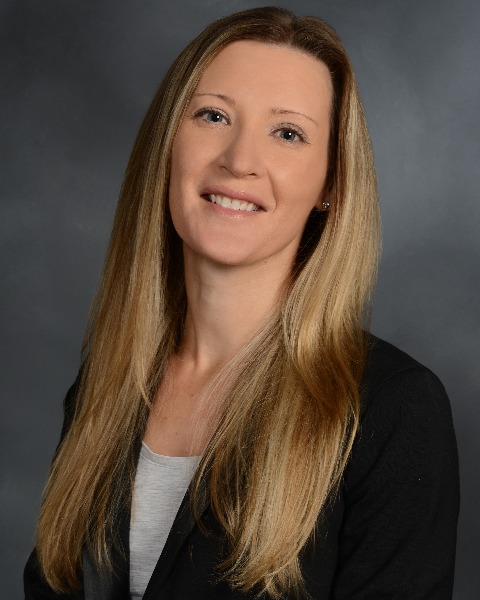Case Report
Program: Section on Hospice and Palliative Medicine
O3229: Goldilocks Grief: Provider Expectations and Response to Caregiver Grief Response in the PICU
Sunday, September 29, 2024
1:35 PM - 1:45 PM EDT
Location: Hyatt Regency Orlando, Florida Ballroom B
Introduction: Caregivers can display a range of emotions during conversations when difficult news is shared, especially during discussions of end-of-life (EOL) in the PICU. Expression of emotion may be influenced by socio-cultural expectations or practices. Providers may have their own expectations about anticipatory grief that can bias their response to displays of caregiver emotion in EOL situations. The patients below were both admitted to the PICU on the same day.
Case Description: 10-year-old female with history of asthma admitted following hypoxemic cardiac arrest secondary to asthma exacerbation at home with subsequent anoxic brain injury resulting in brain death. Family identified as Hispanic and Catholic. Large extended family presence at bedside with outward displays of emotions including sadness, anger, and guilt during provider encounters where difficult news was delivered. Medical providers expressed concerns regarding coping for multiple family members and disruption of other families on the unit. Family was ultimately asked to limit the amount of family at bedside when life-sustaining therapy was discontinued.
8-year-old male admitted with viral symptoms and lab work concerning for leukocytosis and thrombocytopenia ultimately diagnosed with acute lymphoblastic leukemia. Developed altered mental status and was intubated for airway protection. Head imaging showed significant intracranial hemorrhage with brain stem herniation. Family pursued withdrawal of life-sustaining therapies due to suspicion for brain death. Family from Japan and identified as Buddhist, with only immediate family members at bedside. Minimal outward display of emotion during provider encounters. Vocalized significant gratitude to the medical team. Medical providers asked to be included in EOL celebration at the bedside during withdrawal of life-sustaining therapies.
Discussion: EOL communication research has identified dozens of distinct emotions expressed by caregivers. Often providers will respond cognitively to caregiver emotion rather than respond to the emotion itself. Recognition and response to emotion can build trust and engagement in shared decision making. Most pediatric medical providers do not receive routine training in responding to emotion or recognizing anticipatory grief. Additionally, expression of emotions related to grief can be influenced by culture. Research has shown that members from collectivistic cultures may be less inclined to outwardly express emotion than members of individualistic cultures. Failure of providers to acknowledge differences in socio-cultural rules for displaying grief-related emotions can lead to bias, especially when grief responses differ from provider expectations of displays of grief. This can impact patient care, result in inequity, and fail to provide the early bereavement support families may need during and after the death of their child.
Conclusion: Exposure to communication training in responding to emotion and delivering difficult news can help pediatric providers feel more confident engaging with families during EOL. Cultural awareness of displays of grief-related emotions can help mitigate provider bias regarding expected responses to EOL scenarios.
Case Description: 10-year-old female with history of asthma admitted following hypoxemic cardiac arrest secondary to asthma exacerbation at home with subsequent anoxic brain injury resulting in brain death. Family identified as Hispanic and Catholic. Large extended family presence at bedside with outward displays of emotions including sadness, anger, and guilt during provider encounters where difficult news was delivered. Medical providers expressed concerns regarding coping for multiple family members and disruption of other families on the unit. Family was ultimately asked to limit the amount of family at bedside when life-sustaining therapy was discontinued.
8-year-old male admitted with viral symptoms and lab work concerning for leukocytosis and thrombocytopenia ultimately diagnosed with acute lymphoblastic leukemia. Developed altered mental status and was intubated for airway protection. Head imaging showed significant intracranial hemorrhage with brain stem herniation. Family pursued withdrawal of life-sustaining therapies due to suspicion for brain death. Family from Japan and identified as Buddhist, with only immediate family members at bedside. Minimal outward display of emotion during provider encounters. Vocalized significant gratitude to the medical team. Medical providers asked to be included in EOL celebration at the bedside during withdrawal of life-sustaining therapies.
Discussion: EOL communication research has identified dozens of distinct emotions expressed by caregivers. Often providers will respond cognitively to caregiver emotion rather than respond to the emotion itself. Recognition and response to emotion can build trust and engagement in shared decision making. Most pediatric medical providers do not receive routine training in responding to emotion or recognizing anticipatory grief. Additionally, expression of emotions related to grief can be influenced by culture. Research has shown that members from collectivistic cultures may be less inclined to outwardly express emotion than members of individualistic cultures. Failure of providers to acknowledge differences in socio-cultural rules for displaying grief-related emotions can lead to bias, especially when grief responses differ from provider expectations of displays of grief. This can impact patient care, result in inequity, and fail to provide the early bereavement support families may need during and after the death of their child.
Conclusion: Exposure to communication training in responding to emotion and delivering difficult news can help pediatric providers feel more confident engaging with families during EOL. Cultural awareness of displays of grief-related emotions can help mitigate provider bias regarding expected responses to EOL scenarios.

Teresa Vente, DO, MPH
Assistant Professor Pediatrics
Weill Cornell Medicine
Weill Cornell Medicine
New York, New York

